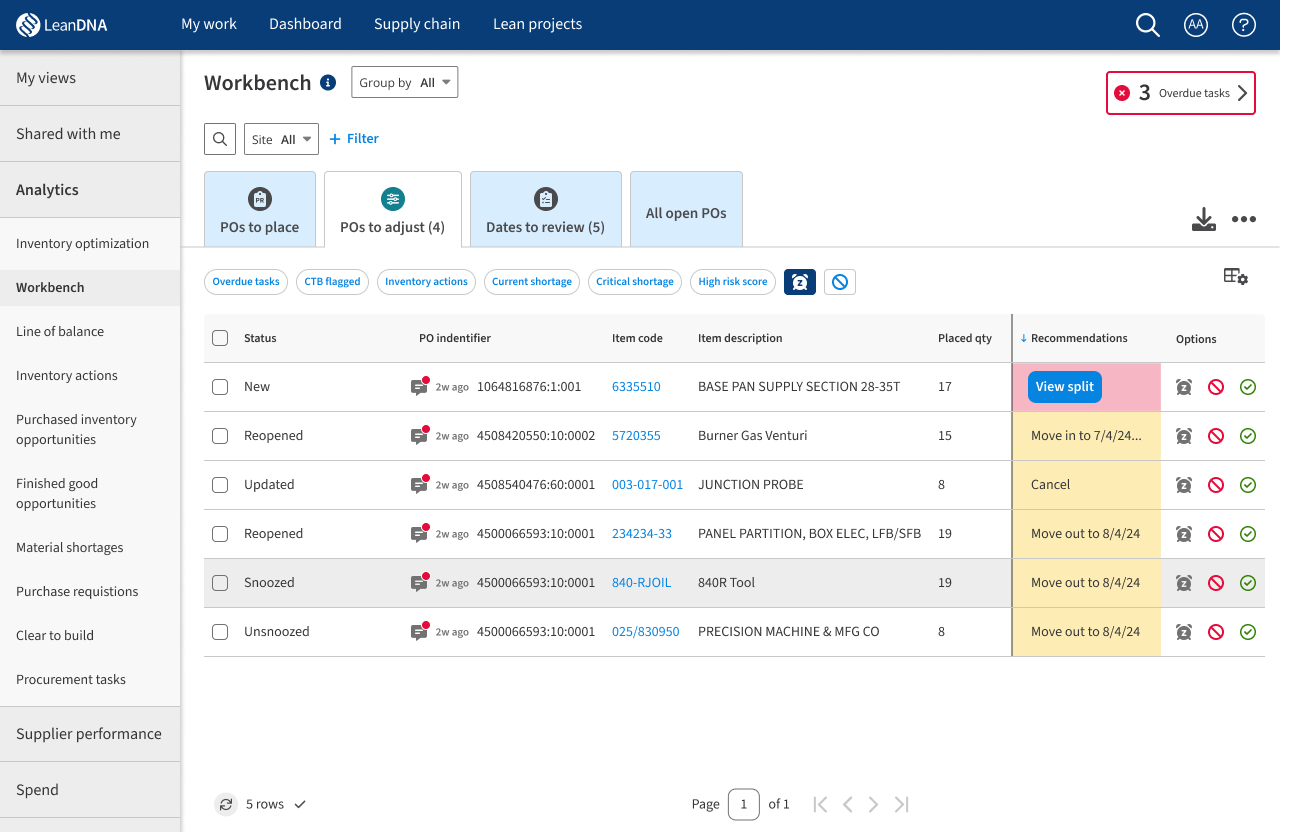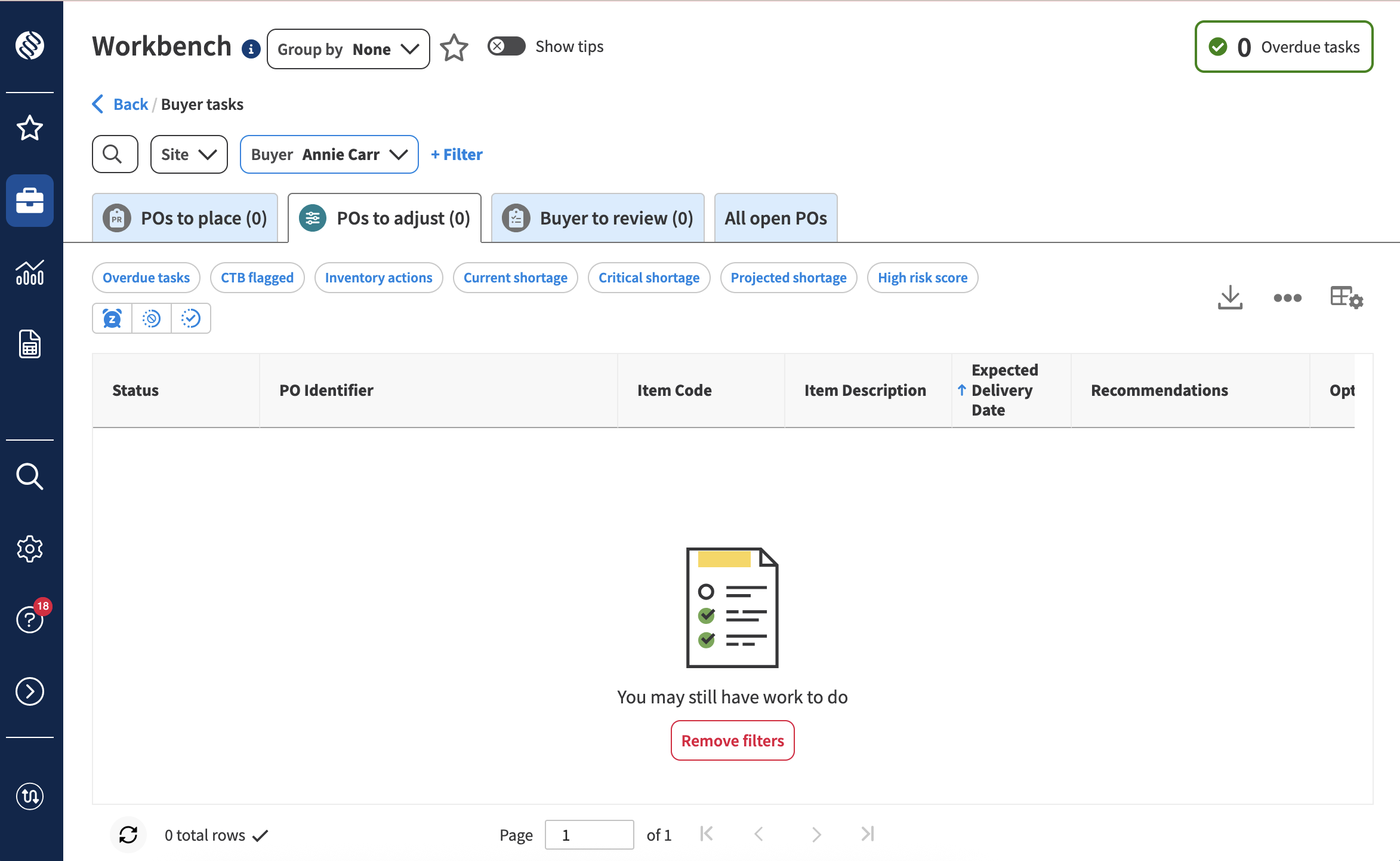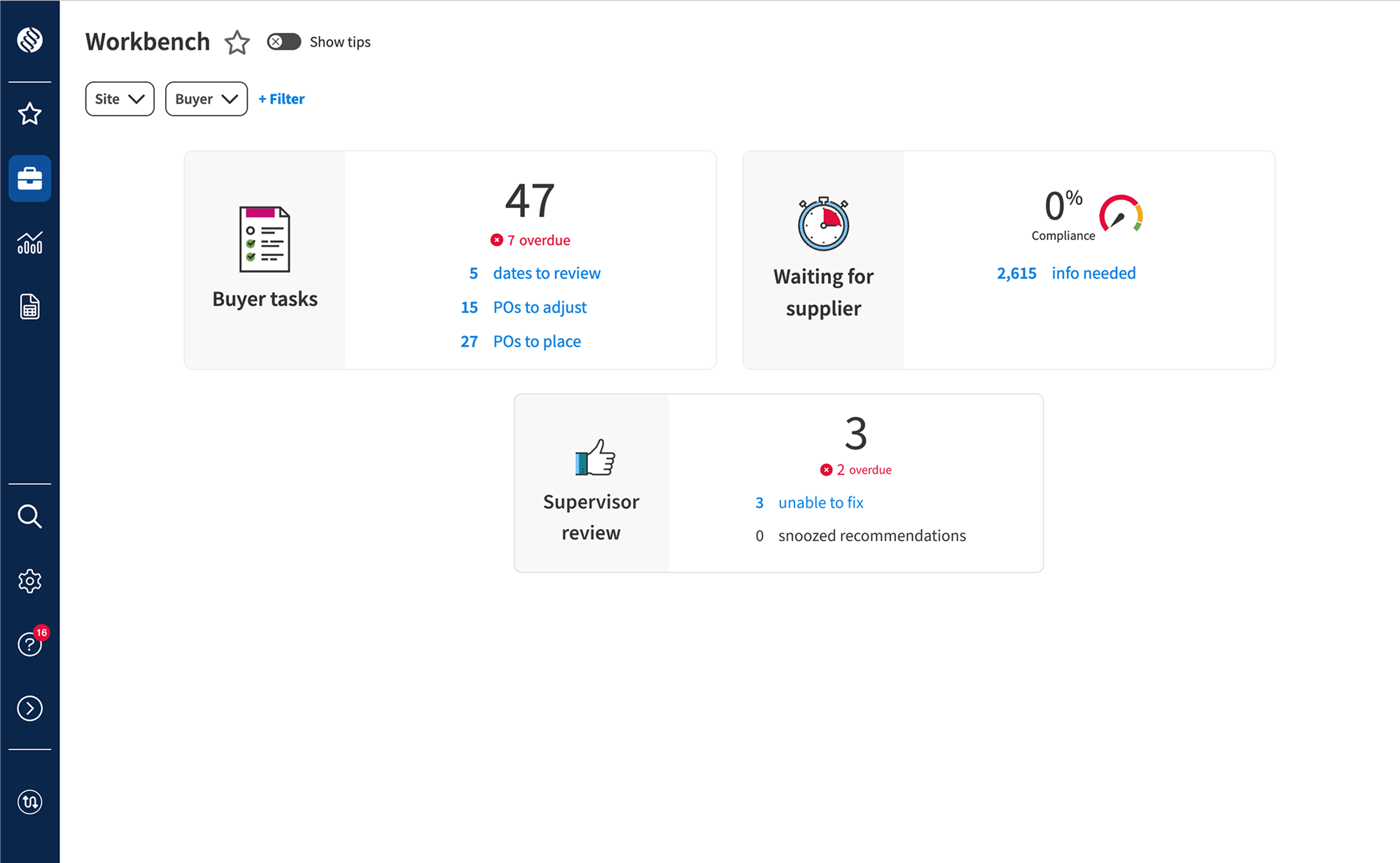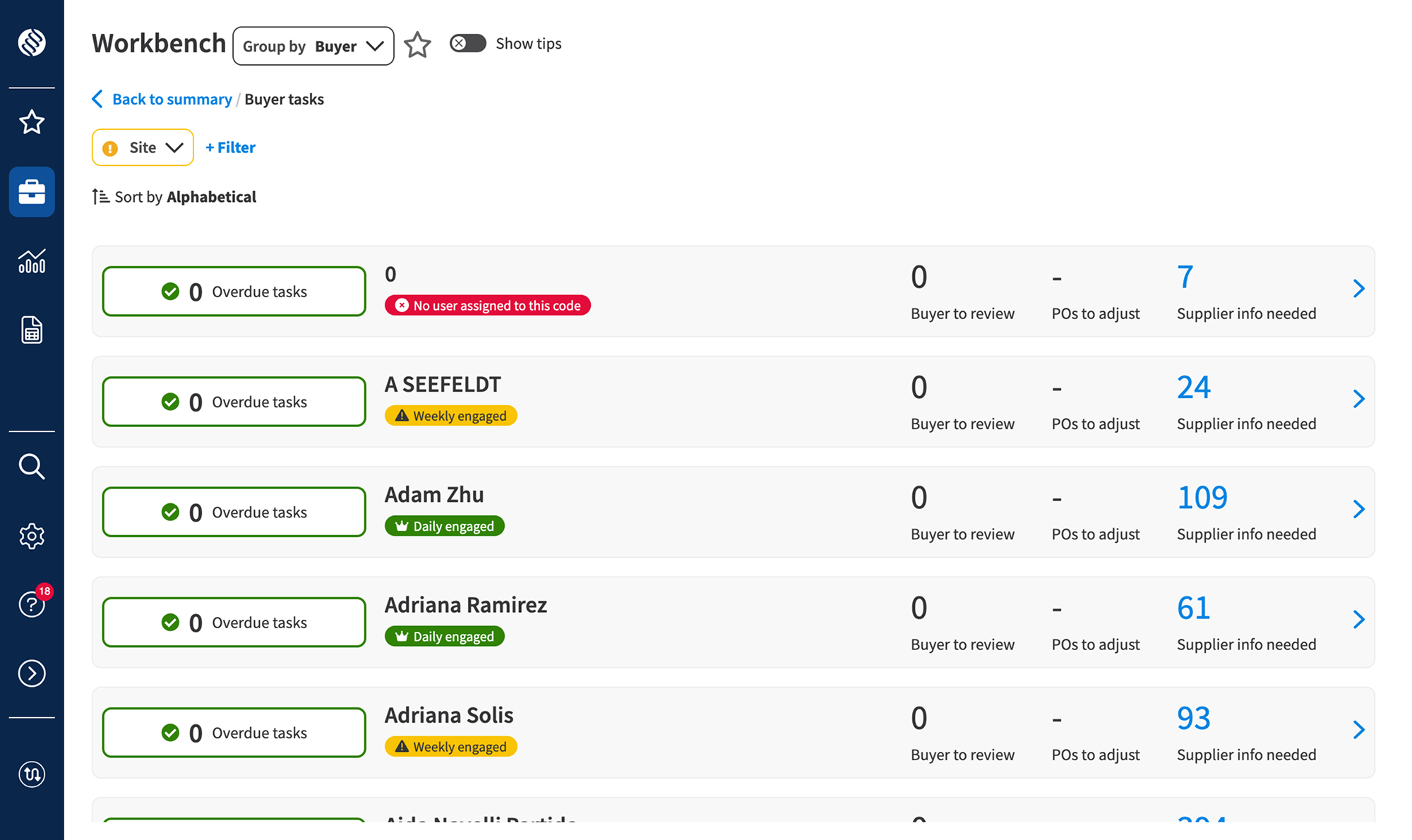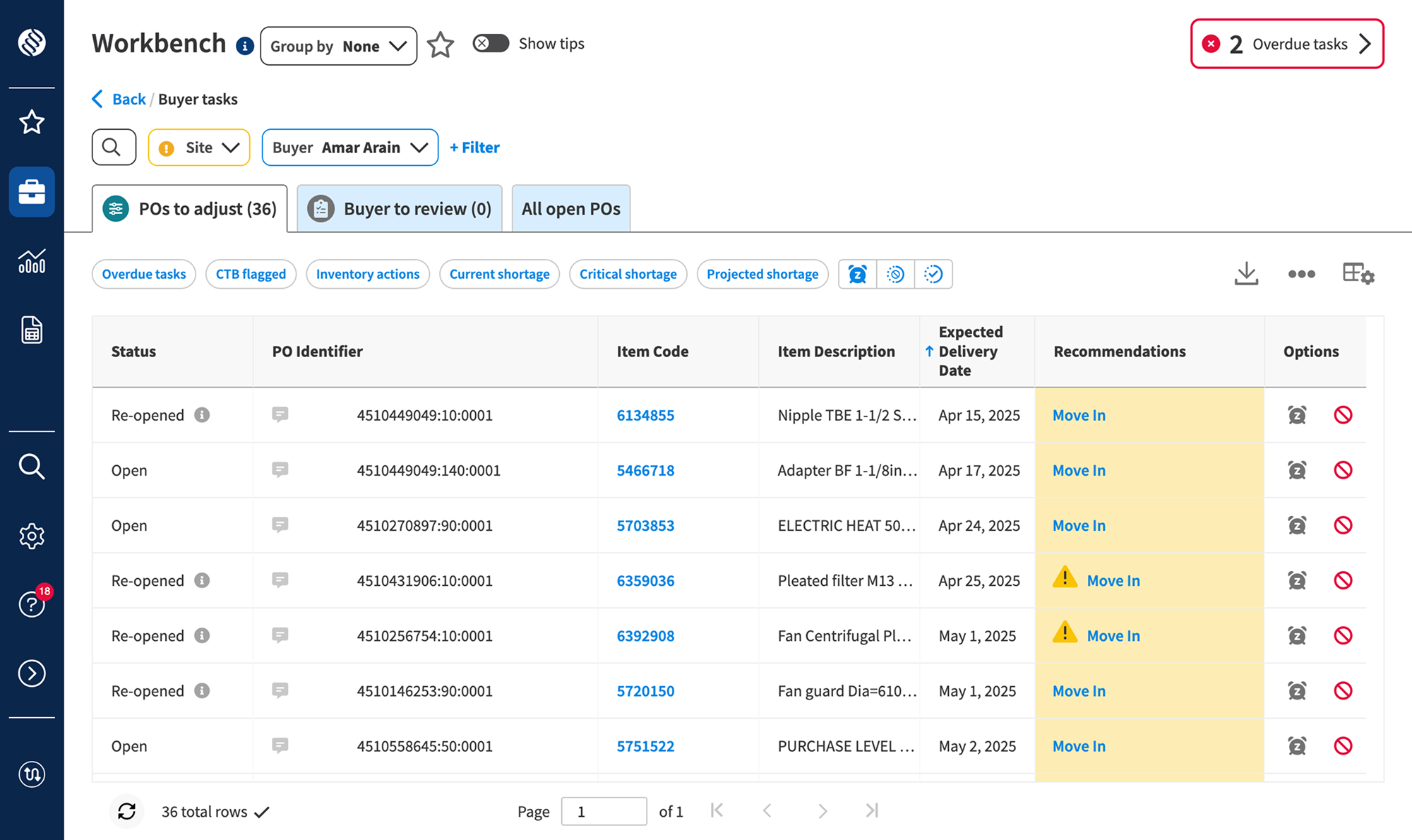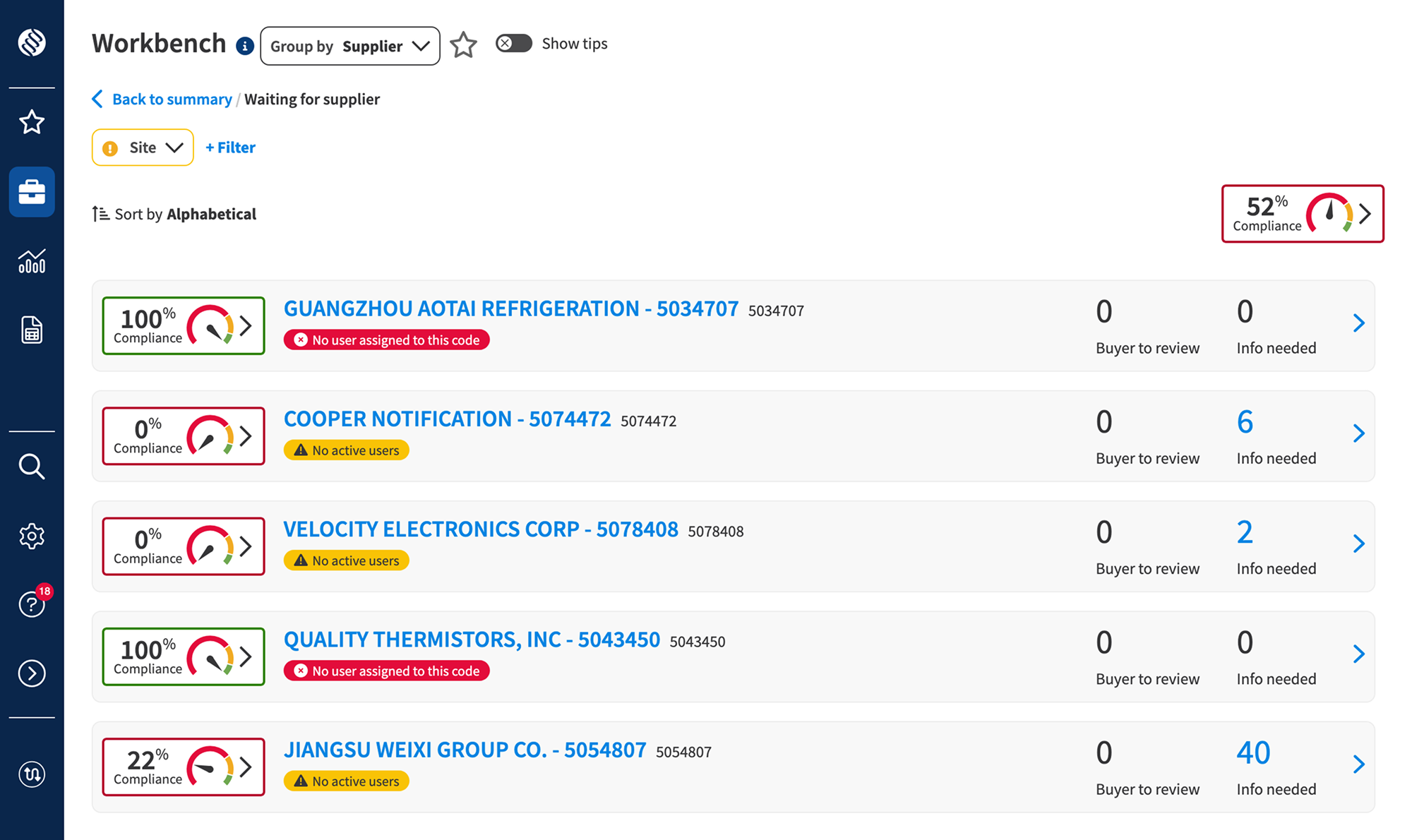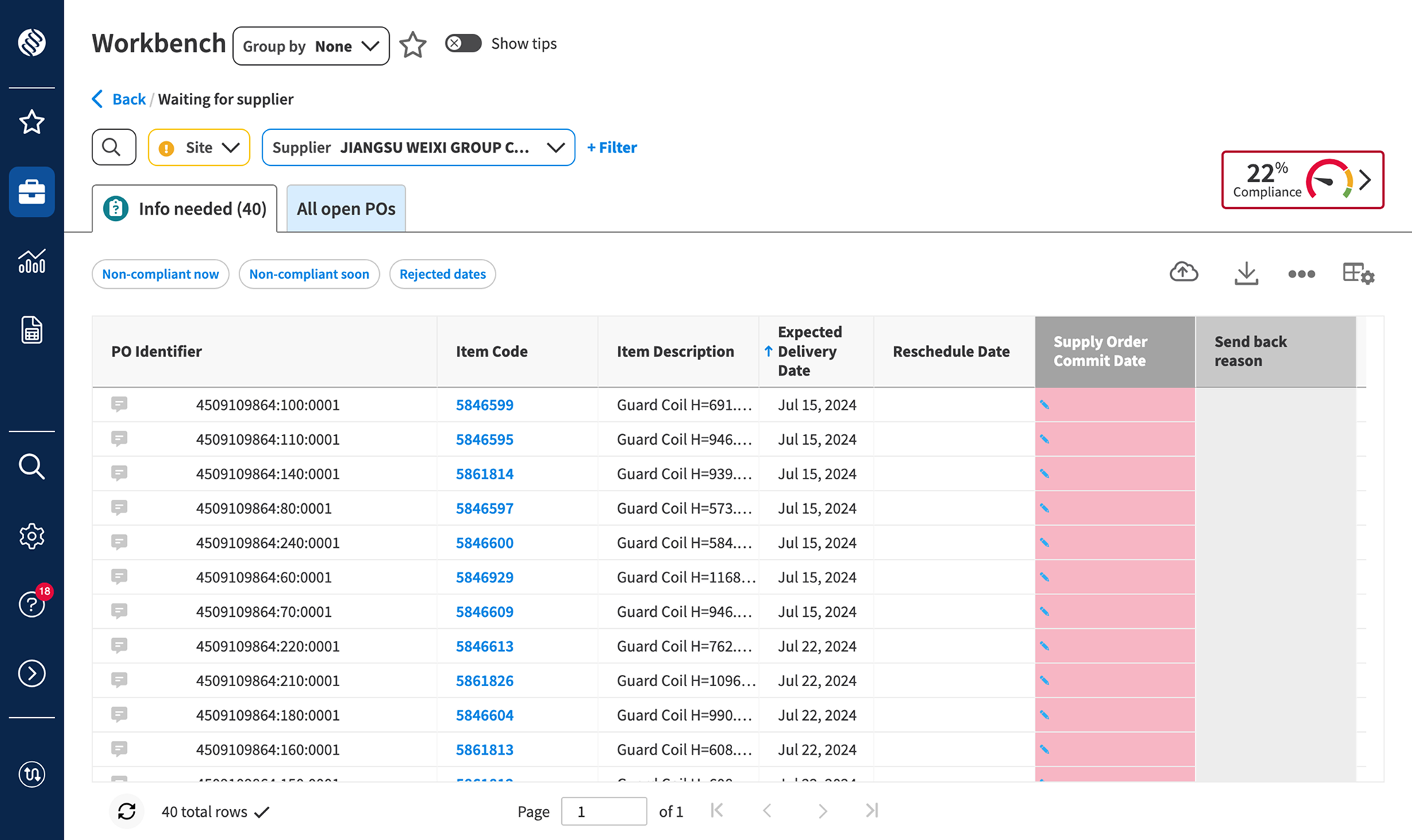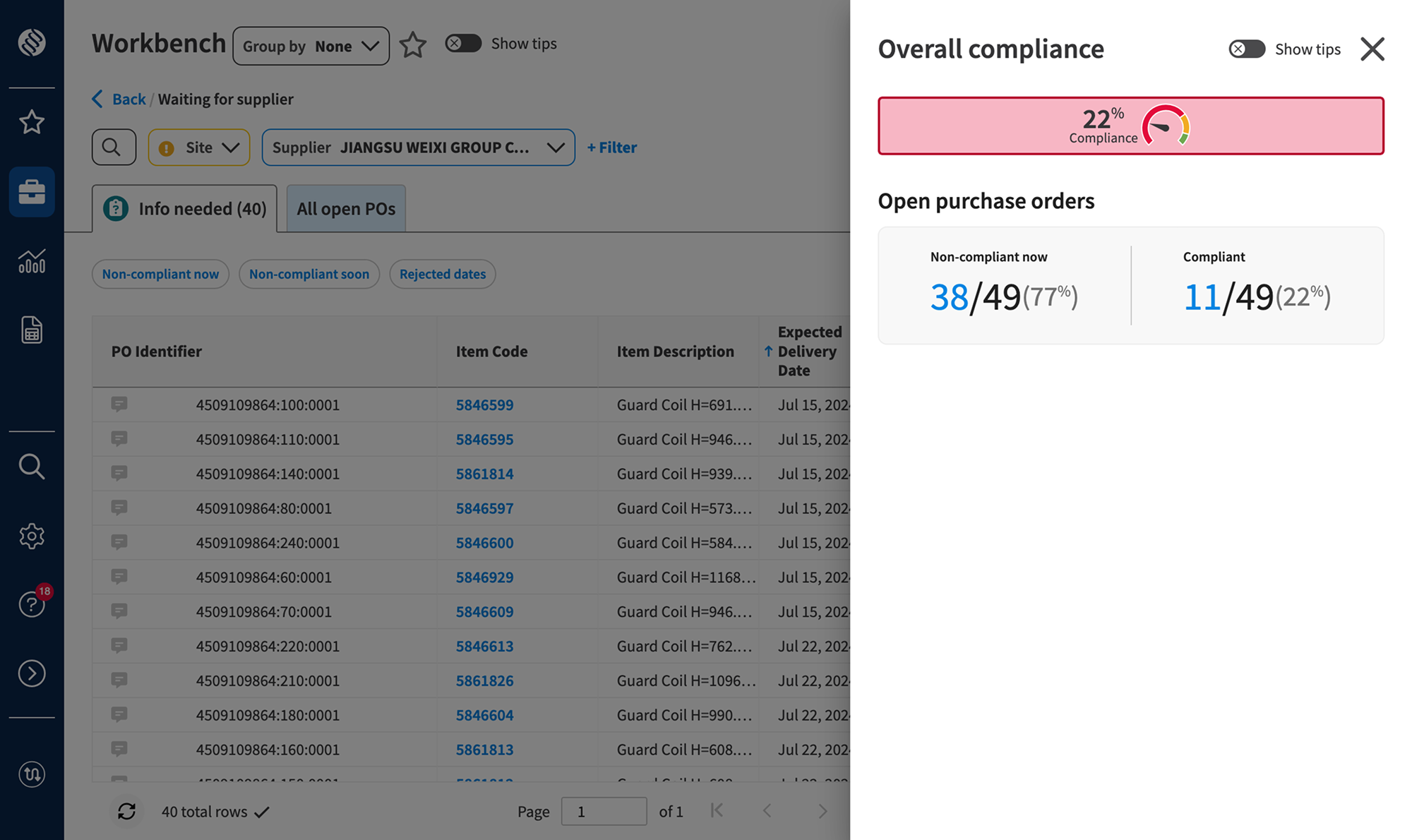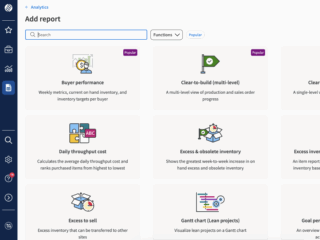1. Background
Within the complexities of supply chain management, buyers frequently navigate challenges ranging from supplier communication to inventory and shortage mitigation. Buyers often struggle with task prioritization and workflow.
Although LeanDNA is rich in data, the amount of raw data and information can be overwhelming. We created a product called “Workbench” to give both buyers and suppliers insight into what is critical.
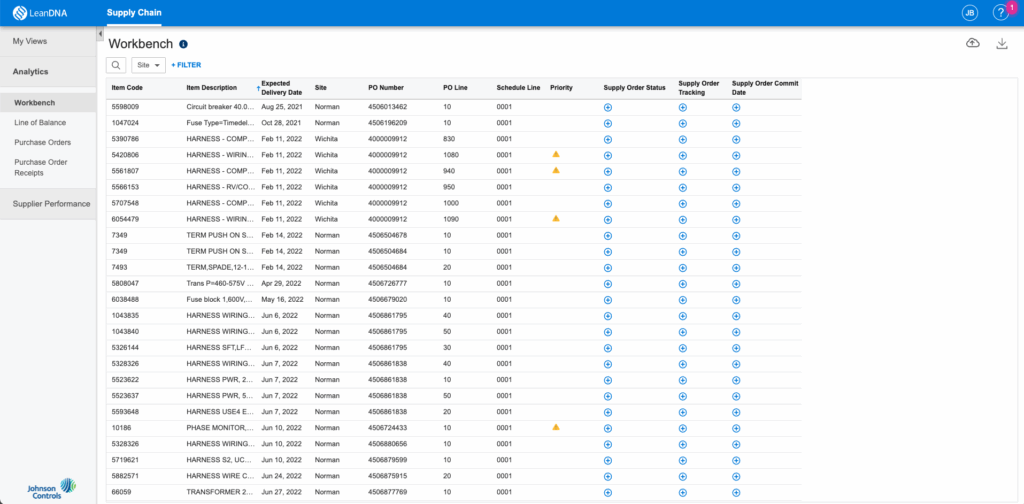
2. Discovery & user research
Given the wide range of tasks that buyers and suppliers need to accomplish, we set out a slow release of tasks and EA to a few companies. We interviewed many users, and stack ranked what was crucial in helping their standard work. The main themes that emerged were:
- Suppliers need to input dates for delivery; Buyer need to review and approve those dates
- Buyers need to adjust purchase orders (PO); suppliers can approve or offer an alternative
- Change of dates, quantity, splitting an order
- Buyers need to convert purchase requisitions (PR) to purchase orders (the public “document”) sent to their suppliers for ordering
Chat
Communicating with suppliers is one of the biggest challenges that buyers face. With Workbench, any information that is updated or changed sends an automatic chat to that purchase order’s chat.
3. Design
We designed Workbench to be a to-do list, organizing tasks via tabs. Our users strongly prefer spreadsheets, so they wanted as many rows as possible on the page. As a designer, I prefer the elegance of a simple underline beneath each active tab, but it tested poorly (as it has in many other products I’ve worked on). Users simply didn’t see them.
In the first version, I designed impossible-to-miss tabs. Users saw them, but they pushed the main table down. Most of our users are on old computers or laptops with small screens. After a few rounds, I moved to a shorter tab, but still visible.
4. Views
Pivots are one of the strongest features of spreadsheets. We created our version by having numerous views/grouping. User tags indicated if they were engaged or never logged in.
- Summary cards: snapshots of buyers, suppliers, and if applicable, supervisor tasks
- Group by buyer: top-level view of each buyer’s overdue tasks and performance; each buyer card links to:
- Group by none (buyer): tab/table view of an indvidual buyer filter applied or remove to see all buyers
- Group by supplier: top-level view of each supplier’s overdue tasks and performance; each supplier card links to:
- Group by none (supplier): tab/table view of an indvidual supplier filter applied or remove to see all buyers
5. Compliance scores & overdue tasks
Another crucial part of Workbench is “grading” users on task completion. Scores are based on priority (critical and warning) since Workbench is about priorities, not purchase orders that are far in the future and don’t cause shortages.
- Suppliers: the more dates/info that are filled, the higher the compliance score.
- Buyers: a running list of tasks to review dates, mark orders that can’t be fixed, etc. This gives supervisors good insight into their buyers’ workflows.
6. Next steps & feedback
Workbench continues to scale, with many features being actively worked on such as attachments, bulk purchase order creations from purchase requisitions, “writeback” to their ERPs (historically, LeanDNA only went one way from ERP -> LeanDNA), etc.
Overall, feedback has been positive with suppliers eager to get 100% compliance scores. We continue to talk to users weekly.
Challenges
Our biggest challenge is changing users’ workflows to stop going to 3-4 reports vs going to Workbench for daily priorities. Supply chain is an industry that is steep in old habits and workflows; LeanDNA hopes to change that.



